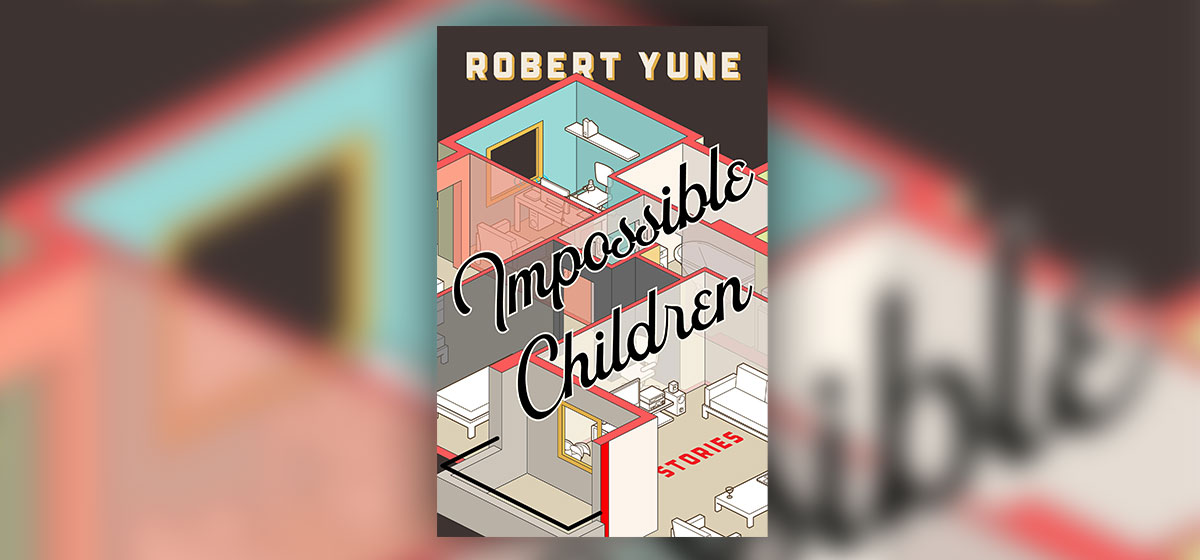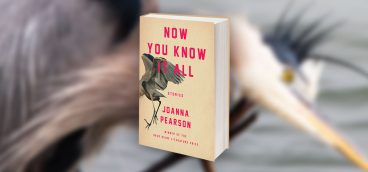Varied Characters, Settings Lift Robert Yune’s “Impossible Children”

In the creative writing classes I teach, scene often becomes an early point of emphasis, especially when it applies to fiction. Hemingway’s classic “Hills Like White Elephants” stands as an exemplar, as the brief story relies on little more than setting and dialogue. According to Nancy Pagh, author of the thoughtfully written “Write Moves: A Creative Writing Guide and Anthology,” scene “can be as forceful as an explosion at a fireworks factory or as subtle as a lover’s eye contact shifting slightly away… creat(ing) the impression we’re there, experiencing what happens through our senses. This is ‘showing.’” In his latest, the Mary McCarthy Prize winning collection of 18 short-stories, “Impossible Children” (Sarabande Books), novelist Robert Yune clearly gets this, using place and well-rendered, self-aware characters to great effect, making for some of the most compelling reading I’ve done in a while.
Yune (a penname for Robert Stevens) was a Navy brat, moving 11 times by the time he turned 18. Perhaps that sense of restlessness found within his characters derives from this frequent uprooting. After graduating from Pitt’s MFA program, he lived in Pittsburgh for the next 15 years, with his fiction appearing in Green Mountains Review, Kenyon Review, and Los Angeles Review, among other places. His 2015 novel, “Eighty Days of Sunlight,” was nominated for the 2017 International DUBLIN Literary Award. Currently, he teaches at Gettysburg College in Gettysburg, Pa. and lives in Wilkes-Barre.
Place looms large in “Impossible Children” as the stories range in setting from New Jersey to Ohio to Illinois to Alaska to Georgia, and even an unnamed Middle Eastern kingdom in the fairy tale-like, “The Impossible Daughter.” Set near Butler, Pa., the story, “Click,” begins with a man and a dead deer. “I’m sitting in my pickup truck minding my own business. What that looks like is a middle-aged man with a salt-and-pepper goatee trying to take a selfie. They’re all coming out poorly—my smile looks more grimacing with each shot. My friend in the passenger seat is not cooperating. That’s the thing: I guess nothing’s photogenic once it’s dead.” The back and forth between the nameless narrator and Officer K, who happens by in his police cruiser, is both hilarious and bittersweet. In the cop’s questioning, it comes out that the situation arose out of the narrating hunter’s need to impress his private-schooled teens, saying, “And I do it. Because I’m a rusty…river turd sailboat and that school is a spaceship.” The shame of a working-class father being judged by his kids and feeling obsolete is palpable in his voice, especially when giving advice to Officer K.
One part of the book’s beauty is that Yune doesn’t hammer the reader with stories from similar narrators but mixes it up through age and gender, allowing us a wider range of perspective, reminding that all of us are someone’s child. He’s particularly adept at showing characters doing their best at navigating the experience of Korean Americans as in “Rumors of My Demise.” In another, “Princeton,” pre-teen brothers Jason and Tommy, (“human wrecking balls,”) have been left to live with well-off family friends in that NJ college town as their Korean father travels in order to pick up the pieces of his professional life after a divorce. The dialogue between the boys is spot-on (“I’m going to kill you you turkey turd burger”), and he captures them as curious and mischievous, resorting to threatened violence between each other and committing acts of petty theft and pyromania.
The story’s symbolism hinges on the host family, the childless Hrisaks, and their ownership of an Anasazi spirit bowl, toward which the youngest boy Jason seems drawn. Speculation about the ancient tribe’s mysterious disappearance, coupled with the father’s sudden return, sets up the climax. “Realizing it might be my last chance, I touched the spirit bowl and instantly regretted it. The blue lines, slightly indented, were spaced as far apart as my fingers. The surface was lightly damp, and the whole bowl vibrated quietly.” In the end, Jason reflects that the nature of his actions “revealed how little we understood or even liked each other,” a poignant thought as we don’t get to pick our families.
Another story Yune skillfully brings to pay off, “Clear Blue Michigan Sky,” centers on a twenty-something Tommy, a Korean American college dropout working in a GM scrapyard in the mid-1990s among a host of red-blooded blue-collar conservatives who tell him, “you’ve got no business here.” Setting sets tone, and while the work is physical, Tommy seems fit for it. “But down in the steaming ruin of industry, we have our own pleasures. With a rush you feel in the hollow of your chest, the floodlights kick on and the scrapyard’s a new universe of halogen and gleaming metal, highlighted caverns in the rows of stacked pipes. And it’s something to behold, one’s labor laid out, pallet after pallet. six rows high.” The physical description throughout the story acts as a reminder of an America that’s largely disappeared as factory jobs have gone elsewhere, as Tommy rightfully points out.
The story hinges on his work relationship with Paige, a transfer from another department who shows Tommy some motherly tenderness as she also navigates a place where it seems she’s not wanted. In time, Tommy will feel conflicted about her, and readers will be stunned how they might feel about her in the end as well. Yune’s ability to write strong, complex female characters, like Auntie in “Everything That Rises” and Farah the Beautiful in “Impossible Daughter” is yet another reason to enjoy this collection. And while a few stories like “Scenes from the Reverse Metamorphosis” and “Live from Plasticville” fell flat in the way a writing prompt can, it’s the interconnected stories of the Moon family that make “Impossible Children” blaze to a gratifying finish.
This trio of tales, “Alpha,” “Beta” and “Solitude City” play out at separate times but all deal with sisters Laura and Jennifer Moon navigating their relationship with their tech-inventor-turned-mogul father, Edward. It’s rife with resentment and conflict as Laura, the older daughter, has become integral to her father, while Jennifer studied fashion in Paris before ending up dating a man in the Midwest. Her daughter, Kacey, also plays an important part that highlights how female roles in modern Korean families like the Moon’s have evolved even though both are tethered to their distant, controlling father. These stories feel ripe to be developed into something larger as they, like so many other characters in “Impossible Children,” are written to allow for growth and feel worthy of more pages.
So, in this time where we’re working remotely, teaching online and chatting with our elderly folks on Zoom instead sitting down to break bread, Yune manages to sum things up nicely during a fictional interview between Edward Moon and Anderson Cooper. In it, Moon says: “Technology is merely a reflection of who we are. With every step—every iteration of product development—I consider who we are as a species and then imagine the best version of ourselves. As a CEO, I find there’s nothing more resilient or beautiful than my family.” While the Moon girls and so many others in “Impossible Children” may feel conflicted about their familial roles, it’s Yune’s turn-able pages that’ll give us pause to reflect on our own.





